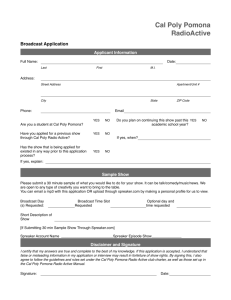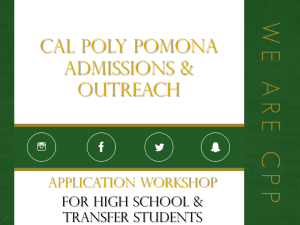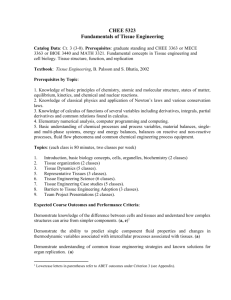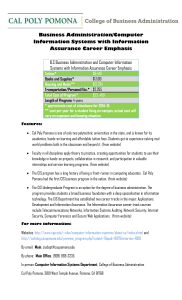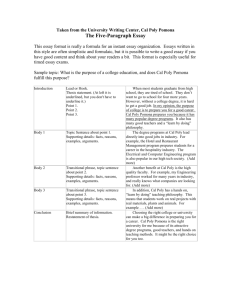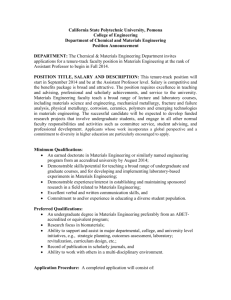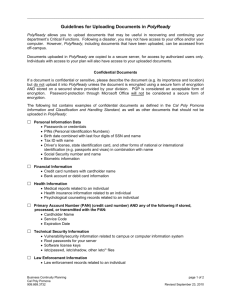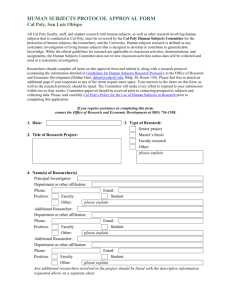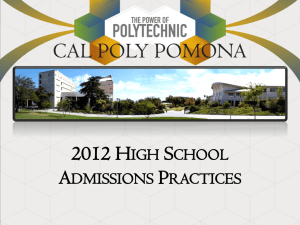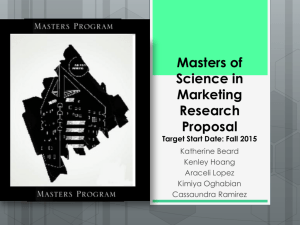IME Student Learning Outcomes Corresponding
advertisement
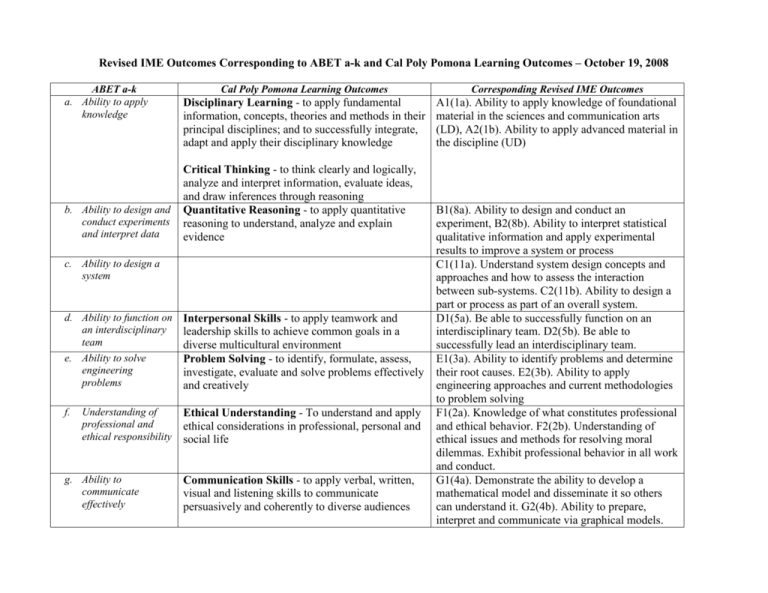
Revised IME Outcomes Corresponding to ABET a-k and Cal Poly Pomona Learning Outcomes – October 19, 2008 ABET a-k a. Ability to apply knowledge b. Ability to design and conduct experiments and interpret data Cal Poly Pomona Learning Outcomes Corresponding Revised IME Outcomes Disciplinary Learning - to apply fundamental information, concepts, theories and methods in their principal disciplines; and to successfully integrate, adapt and apply their disciplinary knowledge A1(1a). Ability to apply knowledge of foundational material in the sciences and communication arts (LD), A2(1b). Ability to apply advanced material in the discipline (UD) Critical Thinking - to think clearly and logically, analyze and interpret information, evaluate ideas, and draw inferences through reasoning Quantitative Reasoning - to apply quantitative reasoning to understand, analyze and explain evidence c. Ability to design a system d. Ability to function on an interdisciplinary team e. Ability to solve engineering problems Interpersonal Skills - to apply teamwork and leadership skills to achieve common goals in a diverse multicultural environment Problem Solving - to identify, formulate, assess, investigate, evaluate and solve problems effectively and creatively f. Ethical Understanding - To understand and apply ethical considerations in professional, personal and social life Understanding of professional and ethical responsibility g. Ability to communicate effectively Communication Skills - to apply verbal, written, visual and listening skills to communicate persuasively and coherently to diverse audiences B1(8a). Ability to design and conduct an experiment, B2(8b). Ability to interpret statistical qualitative information and apply experimental results to improve a system or process C1(11a). Understand system design concepts and approaches and how to assess the interaction between sub-systems. C2(11b). Ability to design a part or process as part of an overall system. D1(5a). Be able to successfully function on an interdisciplinary team. D2(5b). Be able to successfully lead an interdisciplinary team. E1(3a). Ability to identify problems and determine their root causes. E2(3b). Ability to apply engineering approaches and current methodologies to problem solving F1(2a). Knowledge of what constitutes professional and ethical behavior. F2(2b). Understanding of ethical issues and methods for resolving moral dilemmas. Exhibit professional behavior in all work and conduct. G1(4a). Demonstrate the ability to develop a mathematical model and disseminate it so others can understand it. G2(4b). Ability to prepare, interpret and communicate via graphical models. h. Understand global and societal impact of engineering solutions i. Lifelong learning j. Knowledge of contemporary issues k. Ability to use the techniques, skills, and modern engineering tools Global Citizenship - to understand the responsibilities of being a global citizen and the role of civic engagement in fostering a democratic society. Liberal Learning - to demonstrate knowledge and appreciation of the physical and natural world, and of the development and legacies of diverse world cultures Lifelong Learning - to exercise Cal Poly Pomona’s learn-by-doing approach in real-world situations, and as a basis for lifelong learning 21st Century Literacies - to apply 21st century literacies including information, quantitative and scientific, to locate, evaluate, use and communicate among a wide variety of sources and tools Integrating and Transferring Learning - to make connections across disciplines and between current and new knowledge; and to apply their knowledge in professional and community life Business knowledge/skills Project management (based on ABET specific criteria for IE and MFE Employability(IME requirement based on stakeholder needs) G3(4c). Ability to prepare concise written material and present it in a professional manner. H1(13a). Understanding of diversity between cultures, countries, and groups. H2(13b). Understand the global dimensions and trends of technological, societal, economic, and environmental issues. I1(9a). Ability to recognize the need for and be able to pursue life long learning. I2(9b). Ability to adapt to changing professional requirements. J1(10a). Awareness and understanding of contemporary issues including organizations and resources that could be used for further enrichment. J2(10b). An understanding and appreciation of how contemporary issues interact with each other and the profession. K1(7a). Knowledge and ability to choose proper tools for design and problems solving. K2(7b). Effective use of software and other tools to design and solve problems L1(12a). Understand financial aspects of business organizations and make viable recommendations to management. L2(12b). Ability to manage resources efficiently [and effectively]. M1(6a). Professional employment upon graduation M2(6b). Ability to develop and manage a long-term career plan
